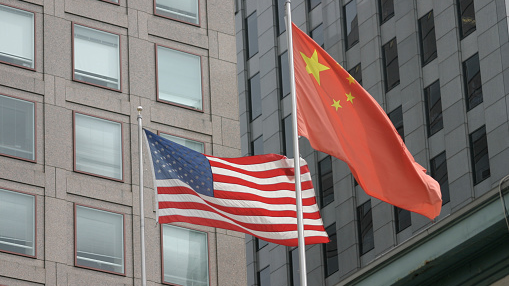
Editor's note: Hamzah Rifaat Hussain is a former visiting fellow at the Stimson Center in Washington and serves as assistant researcher at the Islamabad Policy Research Institute (IPRI) in Pakistan. The article reflects the author's opinions and not necessarily the views of CGTN.
Both the White House and the Chinese Foreign Ministry confirmed earlier this month that Chinese diplomats will be meeting with U.S. officials on March 18 and 19, which will be the first high level in-person contact between the two countries since the Biden administration assumed office.
The scheduled meeting marks a critical development from the absence of dialogue in the post-Trump era with optimism centering on potential confidence building measures which can address trust deficits which have been simmering due to escalating rhetoric from the U.S. government. This is also the first time both sides will be communicating after the widely covered call made by President Biden to his counterpart President Xi Jinping.
The question for most advocates and proponents of China-U.S. peace however, is simple – can this Alaska meeting finally melt the ice within this important bilateral relationship?
There is definitely reason for cautious optimism. Both countries finally have a platform where high-level exchanges can take place which would have otherwise allowed unfortunate hyper nationalism to fester in the United States and prevented deeper strategic foresight on cases such as Xinjiang, Hong Kong or military buildups in the South China Sea.
The timing of the meeting is also significant as it will be taking place after the U.S. Secretary of State Antony Blinken's first overseas trip to Japan and South Korea and comes after what many analysts consider to be an American diplomatic push to solidify its alliances to counter China.

U.S. Secretary of State Antony Blinken attends a hearing before U.S. House Committee on Foreign Affairs on Capitol Hill in Washington, D.C., U.S., March 10, 2021. /Xinhua
U.S. Secretary of State Antony Blinken attends a hearing before U.S. House Committee on Foreign Affairs on Capitol Hill in Washington, D.C., U.S., March 10, 2021. /Xinhua
It would be unfortunate if this meeting only translates into increased acrimony and blame games, only especially after initial optimism and realistic expectations expressed by Chinese Foreign Ministry spokesman Zhao Lijian, who said that China hopes that the bilateral relationship is back towards stability and the U.S. views its ties with China objectively and rationally. Zhao's comments refers to doing away with toxic Cold War mentalities and myopic zero-sum approaches, which were a glaring characteristic of the Trump era, souring ties in the process.
As far as the White House is concerned, the administration has made it clear that approaching China would be based on a "lockstep" approach with its partners and allies. White House Press Secretary Jen Psaki stressed that the key would be to reach a win-win situation where differences are respected and potential avenues of cooperation such as regional connectivity are capitalized upon. In the words of Psaki herself, the meeting is an opportunity to address a range of issues including those with which both sides have deep disagreements on.
For this meeting to set a precedent, bottlenecks must be immediately addressed. While testifying before the House of Representatives Foreign Affairs Committee, Blinken said that the meeting should not be considered as a return to regular engagement at the diplomatic level between both sides. He spoke about the need for China to allow unfettered access to Xinjiang for journalists across the world despite evidence of agenda-driven reporting resulting in lawsuits being filed by corporations in the region. Furthermore, leveraging alliances as part of the "maximum pressure" strategy will contribute to a tenser climate which stymies constructive dialogue.
As per Bonnie Glaser, an Asia expert at the Center for Strategic and International Studies, the timing of the meeting after an online summit between Biden and the leaders of Japan, India and Australia alongside the visit to Japan and South Korea by Blinken and U.S. Defense Secretary Lloyd Austin is intended to send a strong message to China.
For the international community, it is critical to have a fresh start between the two sides which has been reiterated time and time again by senior Chinese officials. Thus, strong messages and conditional talks need to be replaced with exploring avenues of convergence given that blame games have only hindered multilateral and coordinated efforts at the global level during the Trump era. The deleterious effects of the global pandemic add special symbolic significance to these talks on American soil and the ice can truly melt in Alaska in the absence of hostilities.
(If you want to contribute and have specific expertise, please contact us at opinions@cgtn.com.)

